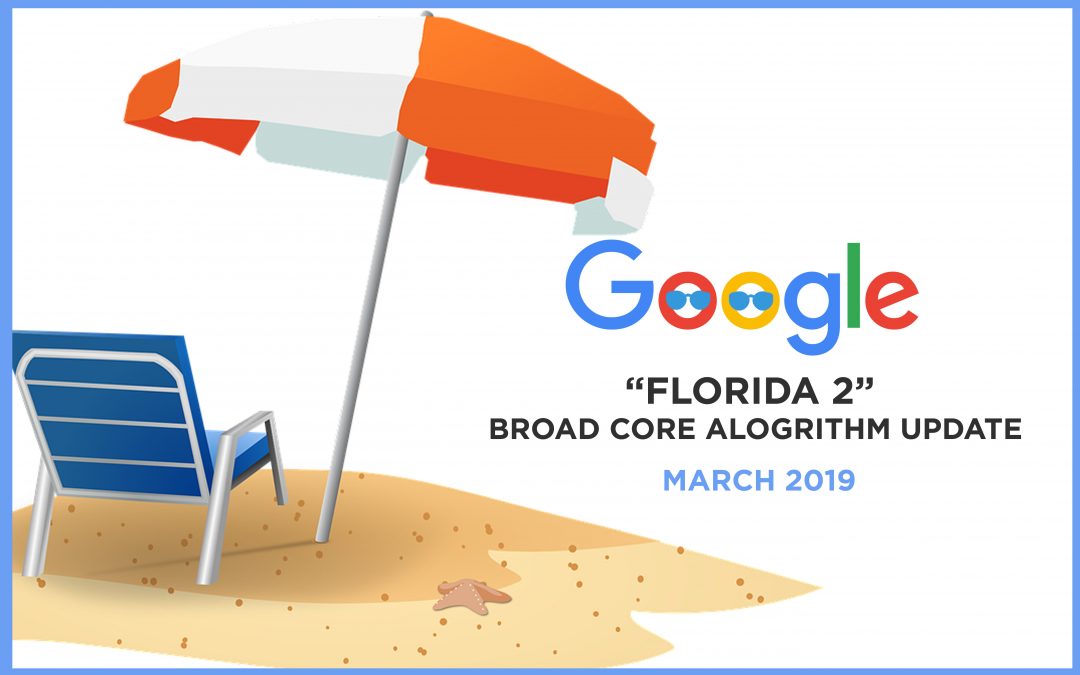On March 12th Google applied a broad core algorithm update. Those of us in the SEO community are calling it “Florida 2” – but Google’s name is a little more prosaic.
We understand it can be useful to some for updates to have names. Our name for this update is “March 2019 Core Update.” We think this helps avoid confusion; it tells you the type of update it was and when it happened.
— Google SearchLiaison (@searchliaison) March 15, 2019
Here is a brief explainer of what this algorithm update means for enterprise SEO, with some tips on what you can do to inoculate your site against any negative ranking changes.
What is a Broad Core Algorithm Update?
Broad core algorithm updates address how Google interprets search queries. The goal with a broad update is to improve user satisfaction.
One past example of this was the introduction of neural matching. Neural matching did not target on-page signals or spammy links; rather, its purpose was to better match user intent to page relevancy – thus providing a stronger search experience for users.
What can you do to prepare for this update?
Since this update is a broad core update and is not targeting a specific industry, region or even tactical elements of the algorithm, there is nothing a site owner can do to match the change. Remember, this change impacts how Google interprets search queries, not how it browses and indexes websites.
Below are comments from Danny Sullivan, Google’s search liaison to the public:
As with any update, some sites may note drops or gains. There’s nothing wrong with pages that may now perform less well. Instead, it’s that changes to our systems are benefiting pages that were previously under-rewarded….
— Google SearchLiaison (@searchliaison) March 12, 2018
There’s no “fix” for pages that may perform less well other than to remain focused on building great content. Over time, it may be that your content may rise relative to other pages.
— Google SearchLiaison (@searchliaison) March 12, 2018
How Can Marketers Respond to Algorithm Updates Like This?
“Focus on building great content.”
Danny Sullivan says it all in his last tweet. But don’t confuse what he’s saying with writing content just for its own sake. What content should actually do is address the educational needs of your audience across their buying journey.
Every person – and every search query – is at a different point in this journey and therefore has a different intent. Make sure you have content assets (web pages and rich media) to accommodate each stage of the customer journey, and every possible intent on the path to making a purchase.
Here are 5 key steps for creating content that gets noticed by search crawlers:
- Map your audience against the buying journey
- Use data and group keywords into primary and sub themes that correlate with the journey
- Understand that each theme should represent only one intent.
If intent starts to pivot, create a new theme and new page - Develop a content plan to fill missing gaps
- Build better quality content
Following all of these steps will help you stand up to algorithm updates. Algorithm changes, as Danny points out, are about Google trying to better match results to intent. By building content focused on your customers’ intent, you can align yourself with this core philosophy.
Watch the Data for Telling Tales
Keep a close eye on your analytics in the coming weeks. If some of your pages drop or gain in rank position, try to understand why. Look at the keywords that have movement and try to interpret the intent behind them – then take a look at the pages whose ranks changed and ask how well they map to that particular intent.
As voice search becomes more common (and it is – 35% of all Americans already have a voice-activated device, according to Forrester) Google will be able to understand intent even better. Expect the company to match voice-generated long-tail queries to conventional “typed” queries – and continue to apply algorithm updates that improve how intent maps to relevancy.




